
THE ONLY COMPLETE ORIGINAL building still standing at Camp Nelson in Jessamine County, Kentucky, is a sizeable house built around 1850 for the just-married Oliver Perry and his bride, the former Fannie Scott, whose family owned the land on which the house sits. It is now called simply the White House. But between 1863 and 1865, at the height of the Civil War, it was just one of more than 300 structures in the center of the camp’s 4,000 acres that housed all the required resources for an army at war. These included a supply depot, hospital, commissary, prison, ordnance storage facility, stables and corrals, a 50,000-gallon reservoir, woodworking shop, blacksmith shop, horseshoeing shop, harness shop, and a bakery that produced 10,000 rations of bread a day. There was also a hotel and tavern called the Owens House, a post office, and a few small eating establishments. Camp Nelson had been built to support the Union Army’s advance into Tennessee, and over its years of wartime service, tens of thousands of soldiers, both white and black, enlisted and were trained there. Camp Nelson was the largest of the eight U.S. Colored Troops (USCT) recruiting centers in Kentucky, and the third-largest in the nation. All that remains aboveground, apart from the White House, though, are the remains of eight earthen and two stone forts, the earthen remains of a powder magazine, remnants of a few icehouses, and the stone foundations of two ovens.
この記事は Archaeology の May/June 2020 版に掲載されています。
7 日間の Magzter GOLD 無料トライアルを開始して、何千もの厳選されたプレミアム ストーリー、9,000 以上の雑誌や新聞にアクセスしてください。
すでに購読者です ? サインイン
この記事は Archaeology の May/June 2020 版に掲載されています。
7 日間の Magzter GOLD 無料トライアルを開始して、何千もの厳選されたプレミアム ストーリー、9,000 以上の雑誌や新聞にアクセスしてください。
すでに購読者です? サインイン

ORIGINS OF PERUVIAN RELIGION
While investigating looters' holes at the site of La Otra Banda in northern Peru's Zaña Valley, archaeologist Luis A. Muro Ynoñán of the Field Museum and the Pontifical Catholic University of Peru spotted carved blocks around seven feet below the surface.
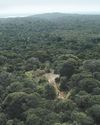
ISLAND OF FREEDOM
Many of the enslaved Africans sent to Brazil beginning in 1549 were from what is now Angola, where one of the most widely spoken languages was Kimbundu.
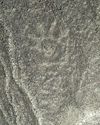
NAZCA GHOST GLYPHS
From the 1940s to the early 2000s, geoglyphs were discovered in the Nazca Desert of southern Peru depicting animals, humans, and other figures at the rate of 1.5 per year.

COLONIAL COMPANIONS
The ancestry of dogs in seventeenth-century Jamestown offers a window into social dynamics between Indigenous people and early colonists.
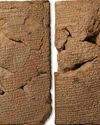
BAD MOON RISING
The British Museum houses around 130,000 clay tablets from ancient Mesopotamia written in cuneiform script between 3200 B.C. and the first century A.D.
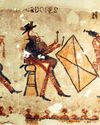
DANCING DAYS OF THE MAYA
In the mountains of Guatemala, murals depict elaborate performances combining Catholic and Indigenous traditions
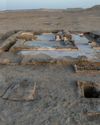
LOST GREEK TRAGEDIES REVIVED
How a scholar discovered passages from a great Athenian playwright on a discarded papyrus
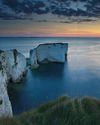
Medieval England's Coveted Cargo
Archaeologists dive on a ship laden with marble bound for the kingdom's grandest cathedrals
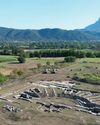
Unearthing a Forgotten Roman Town
A stretch of Italian farmland concealed one of the small cities that powered the empire
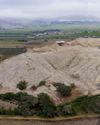
TOP 10 DISCOVERIES OF 2024
ARCHAEOLOGY magazine reveals the year's most exciting finds